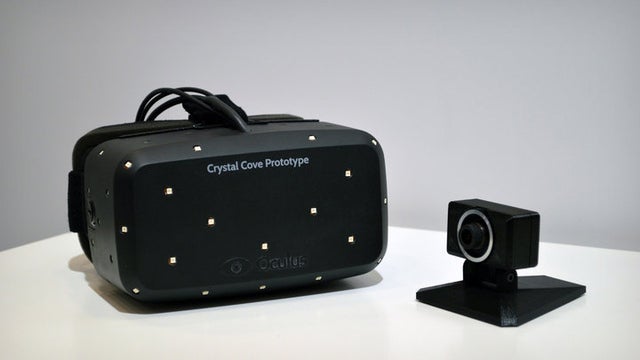Oculus Rift Crystal Cove prototype unveiled with bizarre OLED display

Oculus has unveiled the latest prototype of its Oculus Rift virtual reality headset at CES 2014, known as “Crystal Cove”.
The prototype next-gen virtual reality headset attempts to improve the virtual reality experience by doing away with motion blur that caused some people to feel very poorly.
Previous iterations of the Oculus Rift used traditional LCD screens, but the Crystal Cove prototype has OLED technology which has lower latency so the images respond more quickly to the user’s movements.
Crystal Cove also has a full positional tracking system that uses a camera to track over 24 IR dots located all over the headset. This means you’ll be able to lean and crouch in game, as the camera will see your head moving in the 3D space. Hopefully, this will help motion sickness too.
There’s a rather special OLED screen in the Oculus Rift Crystal Cove prototype that Oculus is calling a “low-persistance-of-vision display”.
Basically, it utilises the same concept that lets you watch movies filmed at 24fps. Although the images only flash one at a time, your mind is capable of filling in the blanks to create a semi-seamless motion.
Oculus is intentionally reducing the amount of information your eyes see with the Crystal Cove, so your brain can fill in the gaps and reduce the latency.
“Our new OLED panel in the prototype switches in well under a millisecond, so it’s faster than any LCD monitor on the market. What we’re doing is we’re taking the image and flashing it on when it’s correct and only keeping that on for a fraction of a millisecond and then turning it off and then going black until the next pulse.”
“It’s not something that any OLED panel can do”, added Luckey.
Oculus wouldn’t reveal any more information about the new OLED display, including whether it was full 1080p HD resolution.
The technology is designed to do away with motion blur and judder for a more comfortable user experience, and Oculus even suggests it increases gamer immersion.
Read more: Ziess Cinemizer review

